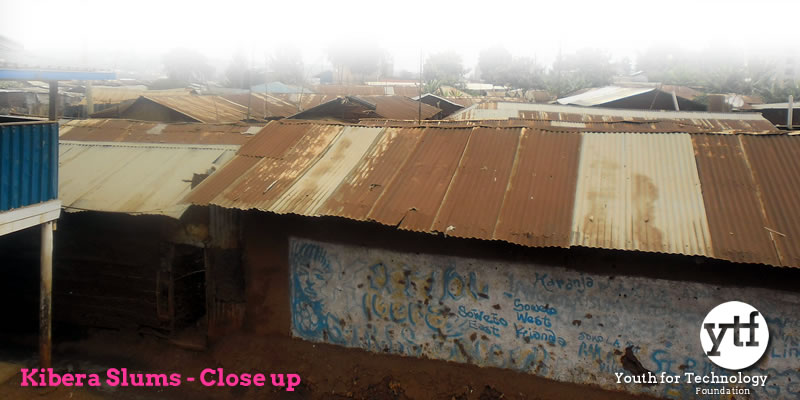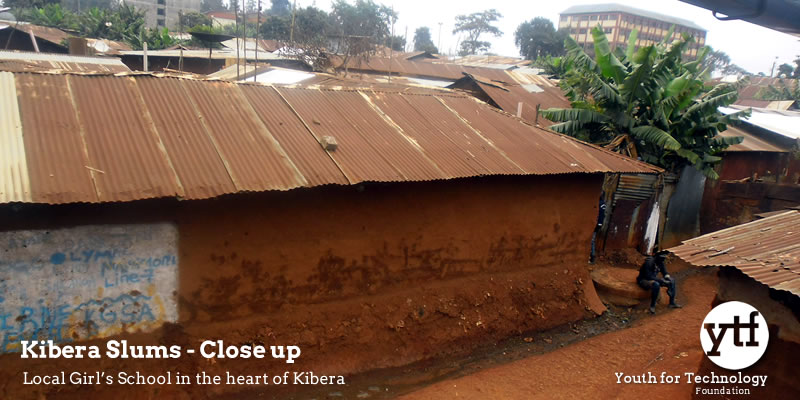Given the new age trend on Africa where the society as a whole has leaned on technology as it’s way forward for development, education, communication and business opportunities, YTF has also seen a niche opportunity to reach out to this otherwise disenfranchised community; albeit a maiden venture. However, there are sufficient reasons and information to support this agenda. Primarily all of this is based on meeting an ever growing need to empower the youth on the ground, who are by far the majority taking up more than 60-70% of the total population in Kenya.
As they say in real estate, and good business; to spearhead an effective venture it’s “Location, Location, Location”. Needless to emphasize further, YTF has Identified Kibera as a suitable pilot area in which to role out its first major campaign. Here are some supporting statistics, to give you a clearer picture of this area.
Statistical Information on Kibera
There are approx 2.5 million slum dwellers in about 200 settlements in Nairobi representing 60% of the Nairobi population, occupying just 6% of the land. Kibera houses almost 1 Million of these people. Kibera is the biggest slum in Africa and one of the biggest in the world.
Land Ownership
The Government owns all the land. 10% of people are shack owners and many of these people own many other shacks and sub-let them. All the rest are tenants with no rights.
Housing
The average size of shack in this area is 12ft x 12ft built with mud walls, screened with concrete, a corrugated tin roof, dirt or concrete floor. The cost is about Ksh 700 per Month ($10). These shacks often house up to 8 or more, many sleeping on the floor.

The population
All the people are African. The original settlers were the Nubian people from the Kenyan/Sudanese border – they now occupy about 15% of Kibera, are mostly Muslim and are also mostly shack owners. The other shack owners are mostly Kikuyu (the majority tribe in Kenya) – although in most cases they do not live there but are absentee landlords. The majority of the tenants are Luo, Luhya and some Kamba – these people are from the west of Kenya. There are many tensions in Kibera, particularly tribal tensions between the Luo & Kikuyu, but also between landlord and tenant and those with and without jobs.
Electricity
Only about 20% of Kibera has electricity. UN-Habitat is in the process of providing it to some parts of Kibera – this will include street lighting, security lighting and connection to shacks (this costs Ksh 900 per shack, which in most cases is not affordable).
There is rampant abuse of cheap locally brewed alcohol, drugs, prostitution among the youth, both boys and girls, and subsequently, as expected, HIV/AIDS is also rampant and ever growing in this area. Politicians also abuse the youth during elections and pay them petty pocket money to cause violence and support them and disrupt their opponent’s rallies and campaigns.
So where does YTF fit in to all of this?
By setting up a Youth Communication Center, we could easily be use simple and inexpensive technology like the new Rasberry Pi, and open source software. Imagine having a computer CPU the size of an external hard-disk that can fit in your shirt pocket. This is just connected to a screen, a keyboard and mouse, and you have a fully working computer. This could greatly help in cutting costs, especially start-up costs.
The Kibera youth could then begin to experience what they otherwise see on TV, or in the papers, live and it could begin to become a part and parcel of their lives. Following the emergence of mobile technology wherein more than 60% of all Kenyans now have a mobile phone or access to one, and more so, smart-phones which are internet enabled from the get-go, people have now become more enticed with social media, and can get instant access to information through their phones. It’s primarily along the same channels that we could target our campaign. Rather than reinvent the wheel, so to speak, we just use the same mobile platform, and digital training materials, which by the way is one of our governments main development agendas, and use enticing photos, videos, and interesting things that they can relate to, and woo them into a new digital information age.
Many of them being completely new to computers, we would need an interesting way of doing a general introduction to computers using a lot of visual aids, and screenshots, using an overhead projector and we could similarly print out large posters like A2 size that we could paste up in the center and create smaller handout versions for the youth to carry home and read and remember the things they saw. The materials would be 80% visual with a line or two illustrating what the screenshot represents. We could then begin to identify those that are learning fastest and thoroughly train them and use them as sub trainers of their various groups.
The moral of the story is replacing the disenfranchisement with information, guidance and training that helps them fend for themselves with their minds, rather than having to get into moral decay for a living.
****
Joe Kamau Macharia is YTF’s Country Lead based in Kenya. He writes from Nairobi where he is responsible for building partnerships with the public, private sector and civil society. Joe is using his passion for youth and technology to help young people achieve their personal goals and become leaders in their communities.


